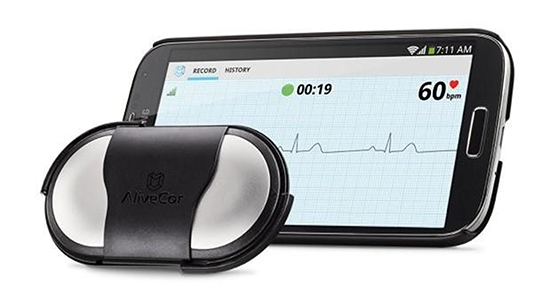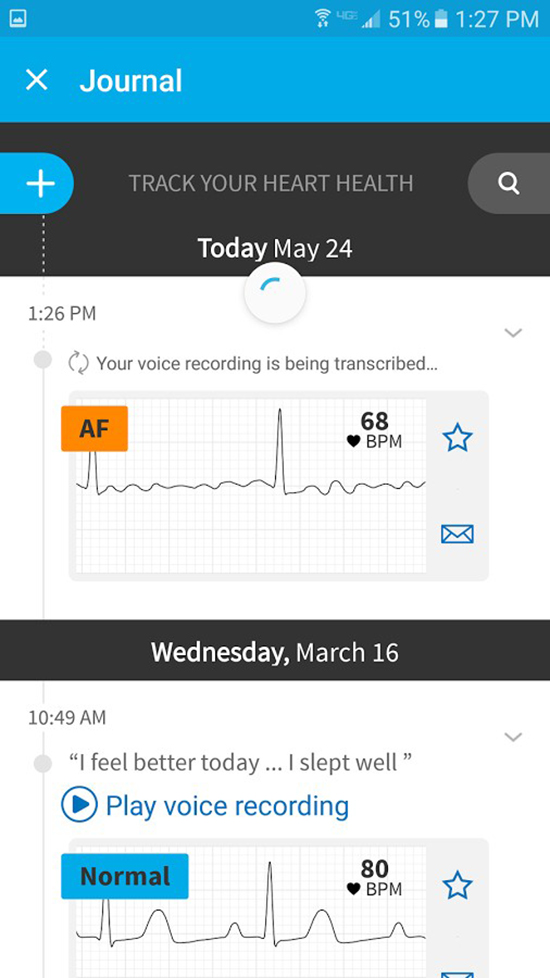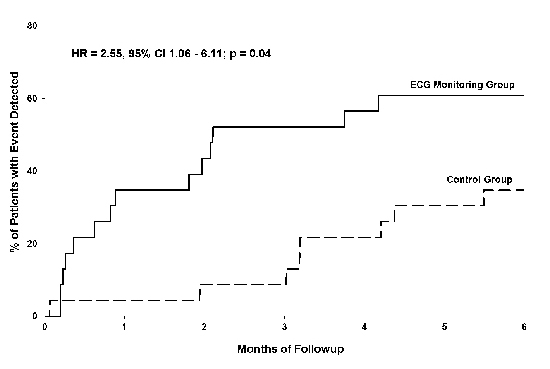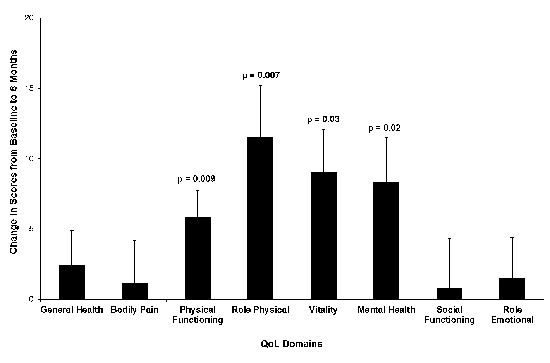Evaluating the Utility of mHealth ECG Heart Monitoring for the Detection and Management of Atrial Fibrillation in Clinical Practice
T Hickey Kathleen1, B Biviano Angelo2, Hasan Garan3, Robert R Sciacca4, Teresa Riga5, Kate Warren6, Ashton P Frulla7, Nicole R Hauser8, Daniel Y Wang9, William Whang10
1Associate Professor of Nursing, Columbia University School of Nursing.2Associate Professor of Medicine, Columbia University Medical Center .3Professor of Medicine, Columbia University Medical Center.4Biostatistician, Columbia University School of Nursing.5Clinical Research Coordinator, Columbia University Medical Center.6Clinical Research Coordinator, Columbia University Medical Center.7Clinical Research Coordinator, Columbia University Medical Center.8Clinical Research Coordinator, Columbia University Medical Center.9Assistant Professor of Medicine, Columbia University College of Physicians &.10Senior Faculty.
Little attention has focused on the integration of mobile health (mHealth) technology with self-management approaches to improve the detection and management of atrial fibrillation (AF) in clinical practice.
The objective of this study was to investigate the differences between mHealth and usual care over a 6-month follow-up period among patients with a known history of atrial fibrillation.
A pilot cohort from within the larger ongoing randomized trial, iPhone® Helping Evaluate Atrial fibrillation Rhythm through Technology (iHEART), was evaluated to determine differences in detection of AF and atrial flutter (AFL) recurrence rates (following treatment to restore normal rhythm) between patients undergoing daily smartphone ECG monitoring and age and gender matched control patients. SF-36v2TM QoL assessments were administered at baseline and 6 months to a subset of the patients undergoing daily ECG monitoring. Differences between groups were assessed by t-test, Fisher’s exact test, and Cox proportional hazard models.
Among the 23 patients with smartphone ECG monitors (16 males and 7 females, mean age 55 ± 10), 14 (61%) had detection of recurrent AF/AFL versus 30% of controls. During the follow-up period, patients given smartphone ECG monitors were more than twice as likely to have an episode of recurrent AF/AFL detected (hazard ratio: 2.55; 95% CI: 1.06 – 6.11; p = 0.04). Among the 13 patients with baseline and 6 month QoL assessments, significant improvements were observed in the physical functioning (p = 0.009), role physical (p = 0.007), vitality (p = 0.03), and mental health domains (p = 0.02).
Cardiac mHealth self-monitoring is a feasible and effective mechanism for enhancing AF/AFL detection that improves quality of life.
Key Words : MHealth, ECG, Atrial Fibrillation, QoL.
Correspondence to: Kathleen T. Hickey, EdD, FNP-BC, ANP-BC, FAHA, FAAN Associate Professor of Nursing, Columbia University School of Nursing 622 W. 168th St., New York, NY, 10032 Phone: 212-305-4944, Fax: 212-342-5540, Email: kth6@cumc.columbia.edu
Atrial fibrillation (AF) is the most common arrhythmia encountered in clinical practice and is a global epidemic with an estimated worldwide prevalence in 2010 of 20.9 million men and 12.9 million women.[1] The condition is expected to more than double over the next 35 years,[2] which further highlights the societal burden of AF and the need for innovative ways to improve its detection, treatment, and management. Individuals affected by AF may experience a variety of symptoms ranging from palpitations and fatigue to dyspnea and chest pain.[3] Many patients are asymptomatic[3] or experience very brief episodes associated with vague symptoms such as fatigue that could be related to other co-existing conditions such as heart failure or age-related changes. The lack of consistent follow-up further highlights the challenges encountered in documenting AF. Individuals with AF that goes unrecognized and untreated are at an increased risk for stroke and overall mortality.[3] Thus, it is critical to evaluate advances in mHealth monitoring to determine how advances in technology can be utilized to improve AF detection and treatment.
The affordability of smartphones has enabled mHealth technology to be integrated rapidly into day-to-day living. For example, 2 billion people, equal to approximately 28% of the global population, currently use smartphone technology.[4] Additionally, there are over 100 million active iPhones® in the United States alone[5] (https://9to5mac.com/2015/11/19/apple-100-million-active-iphones-us/), making mHealth technology a logical avenue for widespread integration into healthcare. Since most individuals report having their cell phones with them at all times, it is feasible to consider mHealth as an effective mechanism not only to transmit real-time ECG data to a healthcare provider and receive immediate feedback, but also to improve patient engagement and self-management. The purpose of this study was to determine if an FDA approved wireless electrocardiogram (ECG) monitor designed for use with smartphones (AliveCor™ ECG) could be utilized to detect and manage recurrent AF or other atrial arrhythmias better than usual medical care (without mHealth ECG monitoring). The primary outcome of this study was the detection of recurrent AF or other atrial arrhythmias over a 6-month period of time, using the AliveCor™ ECG monitor as compared to usual cardiac care without mHealth daily monitoring.
Recruitment and the Informed Consent Process
This investigation was approved by the Columbia University Medical Center Institutional Review Board (IRB) prior to subject enrollment (IRB-AAAJ7801). Subjects were recruited for this pilot study from the departments of cardiac electrophysiology and cardiac ambulatory care at Columbia University Medical Center in New York, NY, USA. These individuals were identified as potential study subjects by their healthcare providers during routine care visits within these departments. The healthcare provider obtained verbal approvals from the patients before the study team approached them. If the participants agreed to be approached, the study team discussed the study with them, allowed them to read the informed consent, and answered all questions. If the patients agreed to participate, they were asked to sign the informed consent which was available in both English and Spanish (participant’s preference). All participants were given a copy of their signed consent form for their personal records.
Study Subjects and Sample Size
Twenty-three subjects participated in the ECG monitoring pilot study. All subjects were 21 years or older, with a documented history of AF and were scheduled to undergo a cardioversion, ablation, and/or medical management aimed at maintaining a normal sinus rhythm. Patients who successfully had normal sinus rhythm restored were given a heart monitor (AliveCor™) compatible with iPhone® or Android™ (ECG monitoring group). The control group consisted of 23 age (within 5 years) and gender matched patients with a documented history of AF receiving usual cardiac medical care (no daily ECG self-monitoring) as part of their usual clinical management. In addition, baseline and 6 month SF-36v2TM Quality of Life assessments were administered to 13 patients in the ECG monitoring group in order to evaluate perceptions of their physical and mental health. These 13 patients also filled out a questionnaire at 6 months which queried their attitudes toward ECG monitoring.
After collecting baseline information, patients in the ECG monitoring group were provided with a heart monitoring device for compatible smartphones. The AliveCor™ ECG device attaches to a smartphone with the one-time adhesive [Figure 1]. A member of the study team downloaded the "AliveECG” application to the patient’s smartphone [Figure 1a]. Subjects were then trained on how to use the heart monitor and capture an ECG. A test ECG recording and transmission was performed during baseline enrollment to ensure the quality of the ECG data being collected and that the participant was comfortable and could independently perform the ECG capture. This training session took from 15-30 minutes, depending on the user’s familiarity with technology.
Figure 1. AliveCor™ ECG device attaches to smartphone with one-time adhesive

Patients in the ECG monitoring group were asked to use the wireless ECG device at least daily (and when symptomatic) to record ECG readings for a period of 6 months; transmission time took less than 5 minutes per day. All ECGs were reviewed daily for AF and other rhythm disturbances and the results were sent to the patient’s primary care physician. The patient’s physician/healthcare team performed the treatment and management of any recorded AF or other cardiac arrhythmias. No members of the research team were involved in direct clinical care.
Figure 1A. AliveCor Kardia application

Quality of Life was assessed using the SF-36v2TM multi-item scale that measures eight health concepts (four physical and four mental health domains) rated on a 3- to 6-point Likert scale.[6] Responses to the questionnaire were transformed into norm-based physical and mental scores.The four physical domains (physical functioning, role-physical, bodily pain, general health) and four mental health domains (vitality, social functioning, role-emotional and mental health) were determined along with the physical component summary (PCS) and mental component summary (MCS) scores. These measures were scaled to have a mean of 50 and a standard deviation of 10 in the general population.
All demographic and clinical data with the exception of age are reported as frequencies and percentages; age is reported as mean and standard deviation. Means and standard deviations were also used to characterize the SF-36v2TM domain and summary scores in the ECG monitoring group at baseline and 6 months. Fisher’s exact test were used to assess differences in clinical characteristics, medications, and AF procedures between those in the ECG monitoring group and the control group. Kaplan-Meier curves were created for AF/AFL detection rates for the ECG monitoring and control groups over the 6 month follow-up period. Differences in AF/AFL detection rates betweenof the study team downloaded groups were assessed using Cox proportional hazards models. Paired t-tests were used for testing differences in QoL health domains and summary scores between baseline and 6 months among patients in the ECG monitoring group. Analyses were performed using SAS 9.4 (SAS Institute, Cary, NC). A critical p-value of 0.05 was used for significance in all analyses.
The demographic and clinical characteristics of the patients in the ECG monitoring and control groups are listed in [Table 1]. The ECG monitoring group consisted of 16 males and 7 females (mean age 55 ± 10) with control subjects matched for age and gender. Within the ECG monitoring group, 16 (70%) had been previously treated with cardioversion while 10 (43%) had undergone cardiac ablation; these rates did not differ significantly in the control group. There were no significant differences between groups with respect to the prevalence of coronary artery disease, stroke/TIA, congestive heart failure, cardiovascular risk factors, or medication usage.
Table 1. Clinical Characteristics
| Variable |
ECG Monitoring Group (N = 23) |
Control Group (N=23) |
P Value |
| Age (mean + SD, years) |
55 + 10 |
55 + 9 |
--- |
|
# (%) |
# (%) |
|
| Males |
15 (71%) |
15 (71%) |
--- |
| Previous Cardioversion |
16 (70%) |
13 (57%) |
0.54 |
| Cardiac Ablation |
10 (43%) |
11 (48%) |
1.0 |
| Coronary Artery Disease |
3 (13%) |
3 (13%) |
1.0 |
| Stroke/TIA |
3 (13%) |
0 (0%) |
0.23 |
| Congestive Heart Failure |
6 (26%) |
3 (13%) |
0.46 |
| CHA2DS2-VASc > 1 |
5 (22%) |
3 (13%) |
0.70 |
| Diabetes |
1 (4%) |
3 (13%) |
0.61 |
| Hypertension |
11 (48%) |
13 (57%) |
0.77 |
| Obesity |
9 (39%) |
15 (65%) |
0.14 |
| History of Smoking |
9 (39%) |
3 (13%) |
0.09 |
| Medications |
|
|
|
| Anticoagulants |
22 (96%) |
20 (87%) |
0.61 |
| Beta Blockers |
15 (68%)* |
19 (83%) |
0.31 |
| Antiarrhythmics |
10 (43%) |
11 (48%) |
1.0 |
| Diuretics |
6 (26%) |
4 (17%) |
0.72 |
| Calcium Channel Blockers |
5 (22%) |
7 (30%) |
0.74 |
| ACE/ARB |
1 (4%) |
4 (17%) |
0.35 |
* 1 response missing
Kaplan-Meier curves depicting the AF/AFL detection rates for the ECG monitoring and control groups are shown in [Figure 2]. Over the six month follow-up period, 14 patients in the ECG monitoring group (61%) and 7 patients in the control group (30%) had episodes of AF/AFL detected. Cox proportional hazard model analysis yielded a hazard ratio of 2.55 with a 95% confidence interval of 1.06 to 6.11, p = 0.04.
Figure 2. Kaplan-Meier Curves for AF/AFI Detection

Among the 13 patients in ECG monitoring group who had QoL assessments at baseline and 6 months, PCS scores increased significantly from 50.3 ± 7.6 to 55.9 ± 5.3 (p = 0.02) while MCS scores did not change significantly from baseline to 6 months (47.5 ± 7.2 and 51.7 ± 9.6, respectively). The baseline and 6 month domain scores are listed in [Table 2]. [Figure 3] shows the change in domain scores from baseline to 6 months. Significant increases were observed for physical functioning, role physical, vitality, and mental health domain scores.
Table 2. Baseline and 6 Month SF-36 Quality of Life Domains
| Domain |
Baseline(mean + SD) |
6 Months(mean + SD) |
|
|
|
|
|
|
|
| General Health |
|
52.0 + 9.0 |
|
|
54.4 + 4.1 |
|
| Bodily Pain |
|
53.0 + 6.8 |
|
|
54.1 + 8.0 |
|
| Physical Functioning |
|
49.9 + 7.7 |
|
|
55.7 + 2.5 |
|
| Role Physical |
|
44.0 + 11.4 |
|
|
55.5 + 4.8 |
|
| Vitality |
|
45.3 + 11.2 |
|
|
54.3 + 8.1 |
|
| Mental Health |
|
42.6 + 7.2 |
|
|
50.9 + 8.5 |
|
| Social Functioning |
|
53.1 + 6.8 |
|
|
53.9 + 7.9 |
|
| Role Emotional |
|
52.2 + 6.2 |
|
|
53.7 + 7.5 |
|
|
|
|
|
|
|
|
At 6 months, none of the patients in the ECG monitoring group reported trouble using the device. In addition, 92% of respondents thought the device was beneficial and 58% said that they were more health conscious after participating in the study. Additionally, there was no difference in the rate of hospitalizations between the ECG monitoring group and the control group; no deaths occurred during follow-up.
Figure 3. Change in SF-36 QoL Domain Scores

In this convenience sample of an ambulatory cardiac electrophysiology clinic population, use of mobile ECG technology resulted in higher rate of redetection of AF/AFL than monitoring through routine care in an age and gender-matched control group. Our study adds to the growing evidence regarding the use of smartphone-based ECG monitoring in other settings[7]-[12], including primary care and post-cardiac surgery, and is representative of the current “real world” shift in ECG monitoring and self-management in clinical practice.
Among patients in the Alivecor™ ECG group, significant increases in quality of life scores were observed between baseline and 6 months follow-up, spanning both physical and mental health domains. These differences are remarkable given the increased detection of AF/AFL that was noted with more intensive ECG monitoring. While speculative, it is possible that improvements in quality of life stem from the assurance of quicker treatment of arrhythmia episodes that would otherwise have gone undetected. Furthermore, mobile phone-based ECG monitoring offers greater access to investigate symptoms that may or may not be related to cardiac arrhythmia, which may reduce the patient’s level of uncertainty. Our participants had the ability to transmit anytime they were symptomatic from virtually anywhere and a trained healthcare provider was able to provide them immediate feedback on their rhythm status (i.e., AF/AFL, normal sinus rhythm, or some other rhythm such as frequent APCs/VPCs that may be associated with symptoms). Many subjects reported that knowing someone was vigilantly watching their heart rhythm was reassuring.
An important facet of new mHealth ECG technology is that multiple adhesive electrodes are not required as in Holter recording and event/patch-type ECG monitors, which can be cumbersome for patients to wear and reapply for extended periods of time leading to diminished ECG monitoring compliance. In addition, the time period is limited in which data is captured for a Holter or event/patch ECG device, ranging from 24 hours to 30 days, and requires the transmission and review of stored ECG data from the patient to a central monitoring site or service for validation and analysis.[13] Although Holter monitors have historically been the standard for clinical cardiac monitoring, their lower diagnostic yield, inconvenience, and higher costs have sparked a movement towards portable and user-friendly ECG devices.[14] The AliveCor™ device, for instance, captures a medical-grade ECG in 30-seconds, from virtually anywhere and has been validated and deemed effective in multiple studies.[15]-[17] An instant ECG analysis is provided using FDA-approved machine learning algorithms, which alert the patient (user) of a normal ECG reading or an indication of possible AF. Patients are also able to track their ECGs and associated symptoms using the AliveCor™ device/app and can relay this information rapidly to their doctor (via print or email as a PDF file) to inform a diagnosis/treatment plan.
Limitations of this study include the non-randomized ECG assignment and small homogenous group of subjects. We are currently conducting a larger prospective randomized study of mobile ECG technology for AF detection among 300 patients with a history of atrial fibrillation.[18] Of note, the protocol also incorporates text messaging to the mobile ECG group in order to provide education concerning risk factors associated with AF and potential alternatives for behavior modification. This messaging may result in subjects being more engaged in their self-management and reducing their AF burden. We will also examine the impact of ECG mHealth on QoL in this larger cohort.
Cardiac mHealth self-monitoring with the AliveCor™ ECG is a feasible and effective mechanism for improving AF/AFL detection in the real world. Individuals with AF who engaged in self-monitoring and knew their ECGs were vigilantly being reviewed reported a better self-reported QoL.
This research is funded by a R01 from the National Institute of Nursing. NIH/NINR R01NR014853.